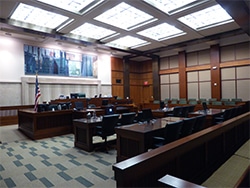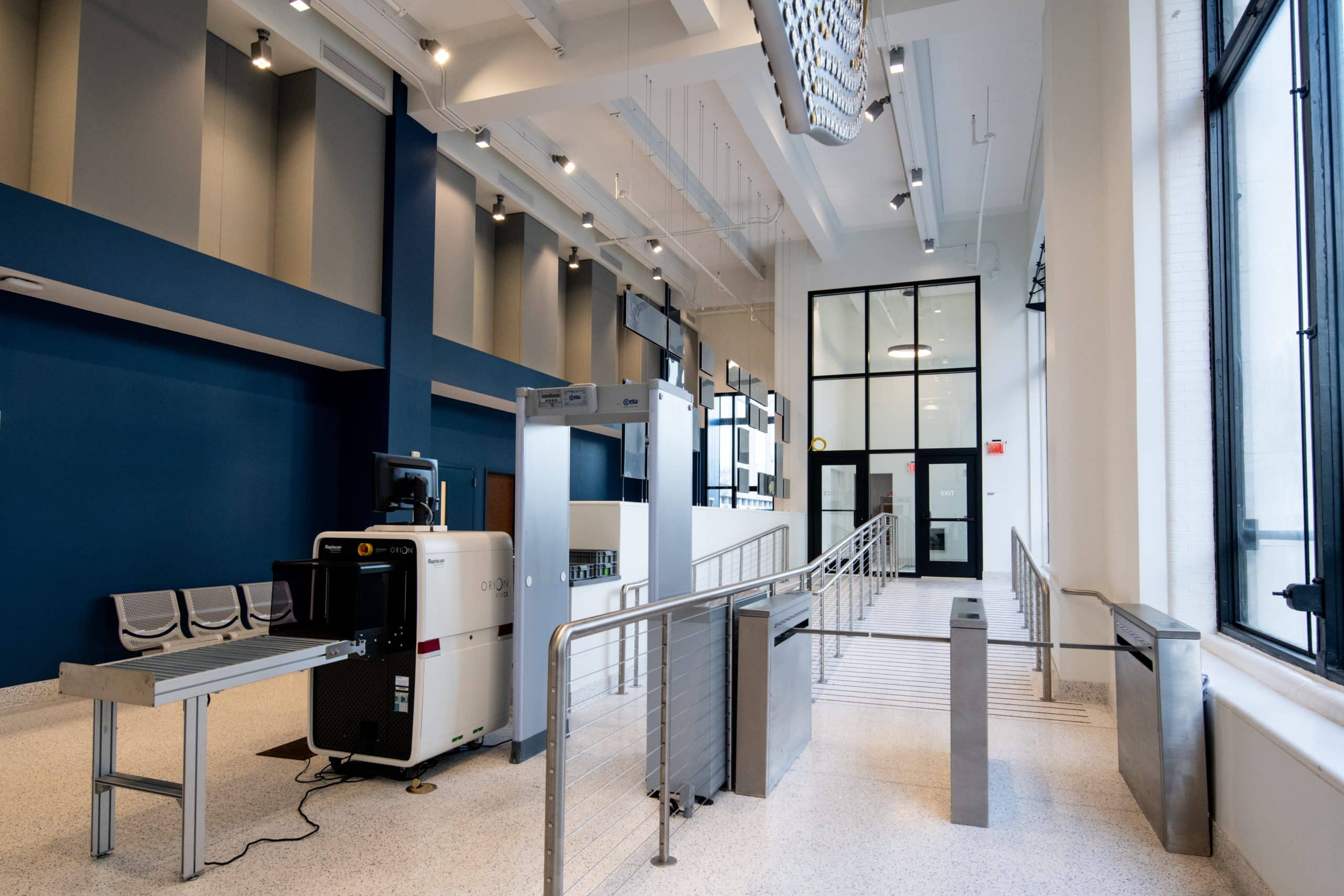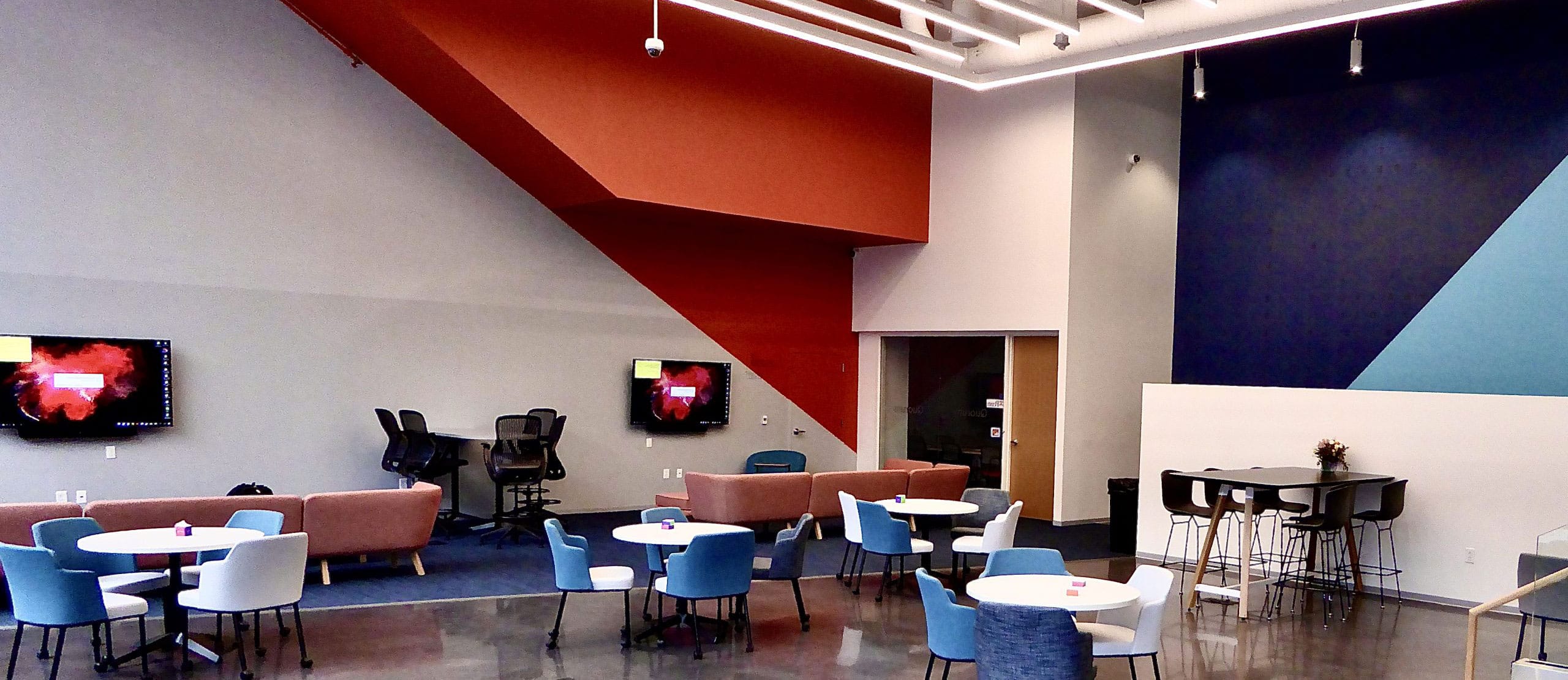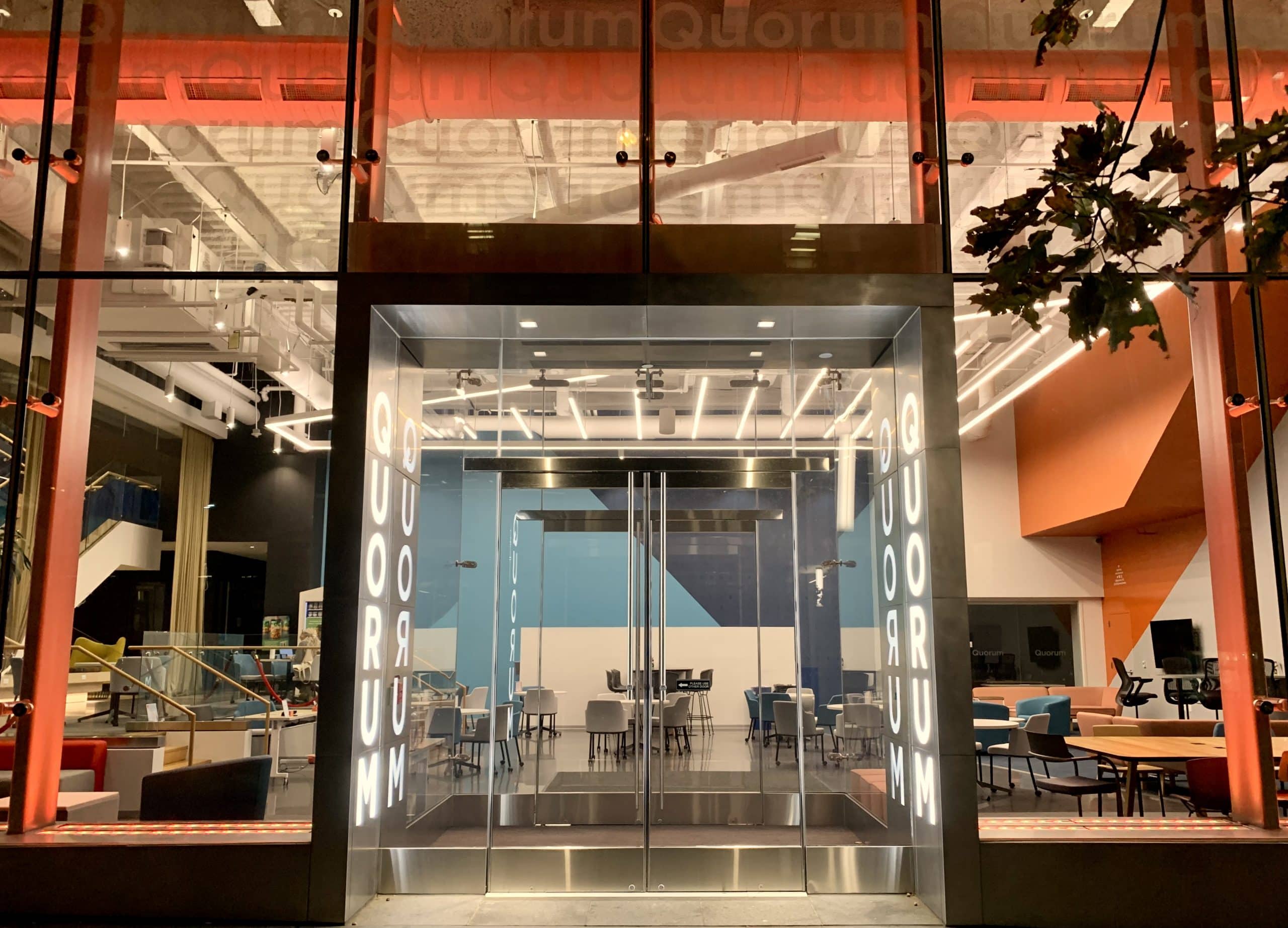
Most people know the term acoustics, but few understand its principles and significance. We are not talking about the slow version of your favorite band’s hit song; we’re talking about the physical properties of sound and the ability of people to communicate within a given space. And when that space is a courtroom, the ability to effectively communicate becomes the utmost importance. In 2010, a judge in Mississippi was actually forced to declare a mistrial because the acoustics were so bad that the jury couldn’t hear anything the attorneys or witnesses were saying. This is just one example, but it sets the stage for how little focus is put into this area.
THE FOUR ACOUSTICAL PRINCIPLES
Before getting into the specifics of courtrooms though, let’s take a look at four principles to consider when designing for acoustics. First is background noise, which is categorized by what is called a Noise Criteria (NC) curve. NC curves have been developed to display different levels of background noise and delineate what it acceptable for various types of spaces. For example, courtrooms should have a NC rating between 20dB and 30dB, which is on the lower (quieter) end so unamplified speech may be heard throughout the room. Second is reverberation time, or reverb, measured in seconds usually by an RT-60 test. The measured reverberation describes how long the sound will last in a room, diminishing to 60dB or about 60 times less than an acoustic test signal “burst” within the space. Meaning that the higher the reverb, the longer a given sound will remain audible in the room. This time is in direct relation to the surface finishes within the room and their ability to either absorb or reflect sound.
The third is sound transmission, classified by Sound Transmission Class (STC). This measures how effective the outer construction assemblies of the room inhibit exterior sound from entering into the space, or vice versa. All acoustic issues and designs revolve around managing the level of these three principles plus the fourth and last, which is sometimes the most annoying and most difficult to address. Think of high-heeled shoes walking above your floor, transformers buzzing through steel and concrete, or air conditioning units resonating the ceiling. These impact noises were addressed first by the State of California in the 1990s and have been slowly adopted by cities and states. It is called Impact Isolation Class (IIC) and is the floor-to-floor isolation value instead of the thru-wall or thru-door measurement associated with the STC mentioned above.
ANNOYING NOISE
When designing the construction of a courtroom, it is paramount to select the right wall assemblies to limit sound transmission from surrounding spaces, apply the right finishes to control the reverb, and make sure that background noise is at the lowest acceptable level. When dealing with acoustics is it important to keep all principles in mind. If just one is not designed properly it can disrupt the activities designed for the courtroom.
This must be taken care of during the early design of new courts, but what if your courtrooms already exist? What if you don’t have the budget for architectural upgrades, or your courtroom is a historical building? Chances are you’re facing one of these conditions and not new construction. So, let’s take a look at some of the design considerations while keeping these conditions in mind.
The first thing to consider is background noise, and more often than not the source of unwanted background noise comes from HVAC (heating and cooling) equipment. Supply and return registers with high velocities can create an enormous amount of background noise. Even worse, if the mechanical equipment is located too close to the room or mounted directly to a structural element, the vibrations from that equipment can create hum. Changes in duct sizes and liquid running through pipes can create unwanted noise if not properly treated.
The good news is that there are a wide variety of products available to help control the sound levels of these issues. A trained ear and minor acoustic testing equipment is all that’s needed to diagnose these issues.
CAN YOU UNDERSTAND ME?
Once background noise is under control, the next consideration is speech intelligibility. Because, for courtrooms, clear articulation above 85% in accordance with standard Yale Speech Tests is the principle design goal. Speech intelligibility is the one factor influenced by both the speaker and the listener needing to communicate. Fixing a room with poor speech intelligibility isn’t easy, but can be inexpensive. As is the case with any complex problem, there usually doesn’t exist just one causing factor. However, a large number of cases involving poor speech intelligibility can be caused by long reverberation times. Long reverb times mean that sound is reflecting off surfaces around the room. This manifests at the speaker and the listener as sound that seems to come from different directions with slight delays. For the speaker, this can cause them to lose their train of thought and pause often during their address. For the listener, this is what causes confusion and often times frustration, which is exactly what you don’t want during proceedings.
TEST EQUIPMENT TO THE RESCUE
Our multi-platform test equipment utilizes calibrated lab-quality microphones and expensive test gear to iPads with special software to both model behavior and manipulate remedies in three dimensions. Our ears cannot do this alone.
AM I LOUD AND CLEAR ENOUGH?
Although it can sometimes be obvious when an intelligibility problem exists, diagnosing the cause can be a little bit more problematic. Acoustic testing is imperative here to decipher the cause or causes of poor intelligibility. The RT-60 test mentioned above and acoustic modeling with computer software will often be required to devise a proper solution.
Another variable to consider when designing courtroom acoustics is an audio system. Audio systems and acoustics go hand in hand, a good design for one does not entirely eliminate the need for the other. The use of an audio system simply changes the desired performance of the acoustics for a given space. This leads to a common issue with courtrooms. Many courtrooms were built for unamplified speech, and were subsequently upgraded with an audio system. Although in many cases this works fine, sometimes the new amplified sound may cause intelligibility issues. Microphone and speaker placement become critical in these situations. In a recent courtroom project the reverb was above a level of acceptability—distracting enough to make it difficult to understand someone speaking without straining and becoming fatigued. The problem, aside from acoustics, was that no acoustic panels or architectural treatments could be used in order to preserve the look of the historically registered courtroom. So instead, all of the locations with key personnel were given their own small, desktop mounted speakers. This gave everyone a direct, local source of sound that greatly limited the effect of hearing sound reflections around the room.
These are just a couple of examples of problems courtrooms could have with acoustics. It may not seem obvious at first what the cause of a specific issue is, but anyone can hear when something isn’t right; or they’re at least getting complaints from other people. The source of the problem isn’t always easy to find, and often times the audio system gets the blame. Because it is so important to communicate clearly in a courtroom, special attention must be taken to properly test, diagnose, recommend, and implement effective solutions.






